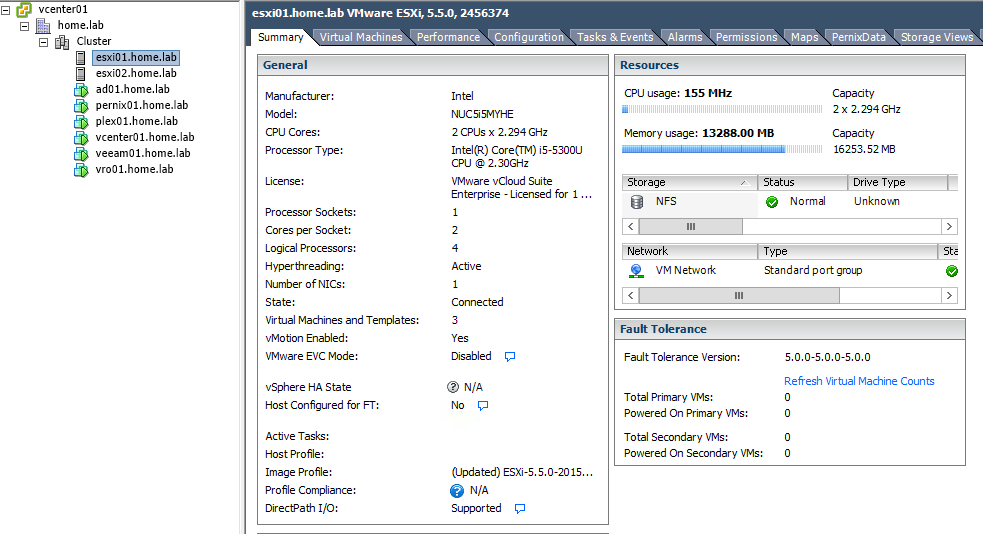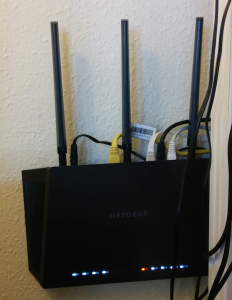I had been considering for some time what home lab hardware to get. Luckily there are plenty of home labs blog post in the community that gives you inspiration. For a home lab everybody wants unlimited CPU, RAM and Storage resources. But because it is a home lab (it runs in your home) you have to consider space, power usage, noise, price. Once you factor in these four constraints you will be on the road to finding the lab that fits you.
I wanted my home lab to run 24/7 – so power usage and noise were two important factors for me. I also would love to be able to run the home lab headless (no monitor) but still be able to connect through IP to the screen.
After considering my options I ended up with the following configuration:
- Intel NUC5i5MYHE with i5-5300U processor and Intel VPRO/AMT technology
- 16 GB DDR3L Kingston Memory
- Kingston E50 240GB SSD
- 32GB Sandisk Cruzer fit USB Key
I already had a two disks Synology DS211+ NAS running at home. So that is used as a NFS datastore for the virtual machines. The Cruzer fit usb key is used for ESXi installation and the Kingston E50 240GB SSD is used with PernixData as a read & write acceleration in front of the Synology.
With PernixData doing its magic my Synology NAS is perfect for what it does, storing the virtual machine. Just look at the screenshot below. NAS experienced 148 ms of latency but the VM experienced 0,71 ms. That is the power of decoupling performance from capacity.
If you are looking at a home lab the NUC can be a good choice. But you have to be able to live with only 16GB of RAM pr. NUC and a Dual-Core processor. Luckily with VMware I can always scale out and add more NUCS to the vSphere cluster when I am in lack of resources.
Right now this is what the home lab looks like.








